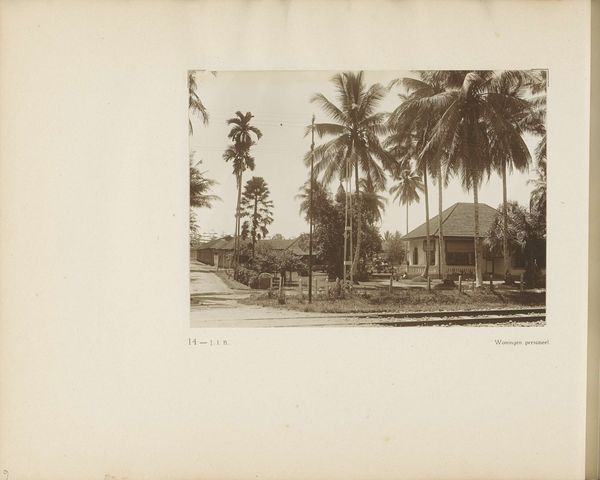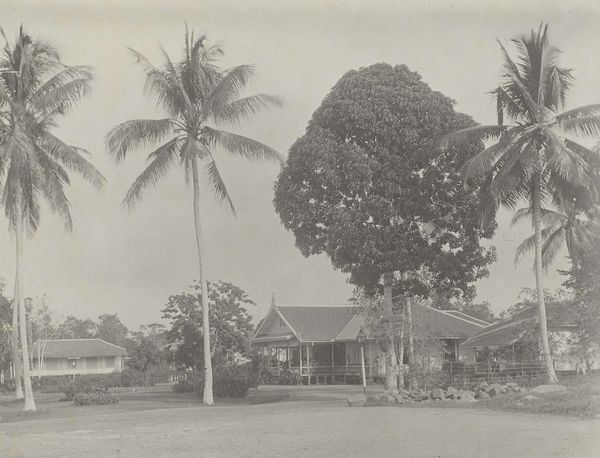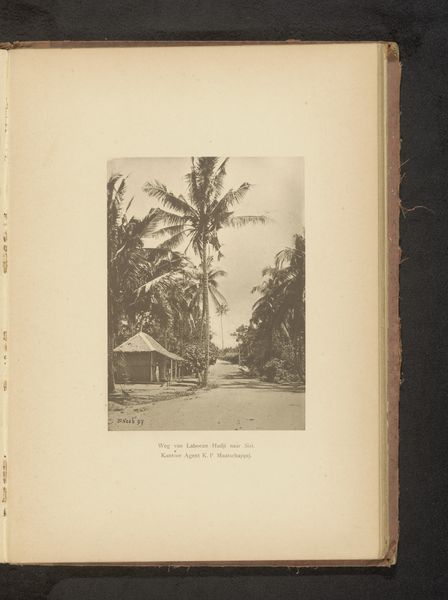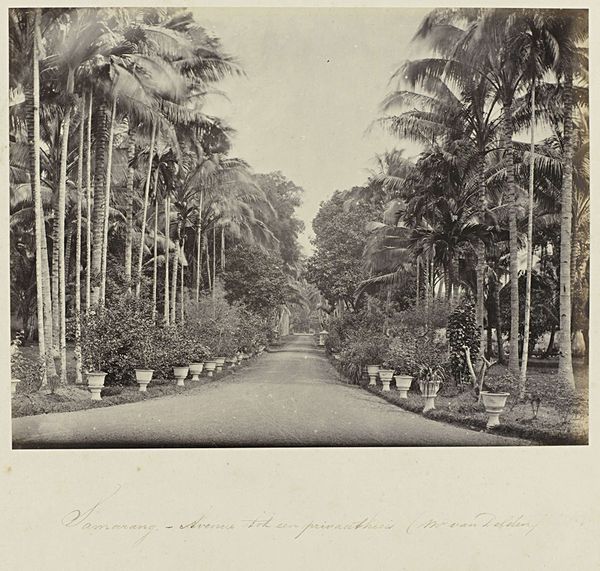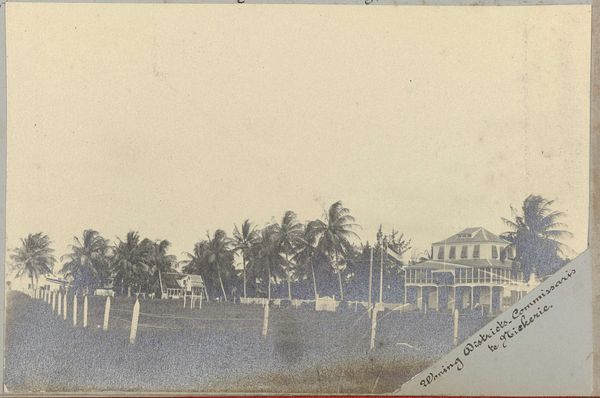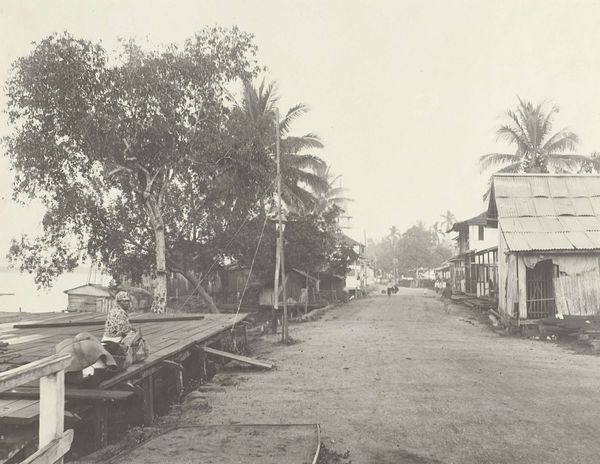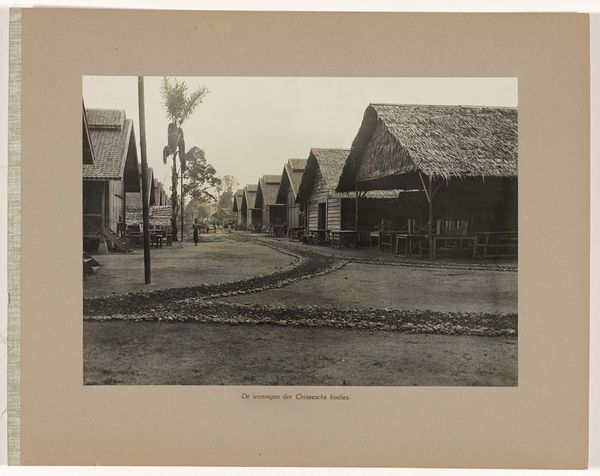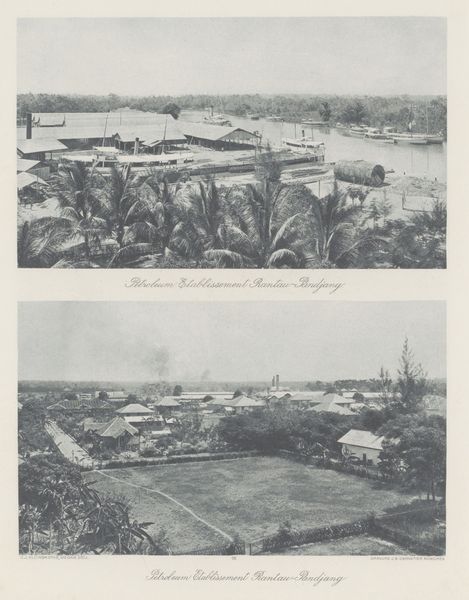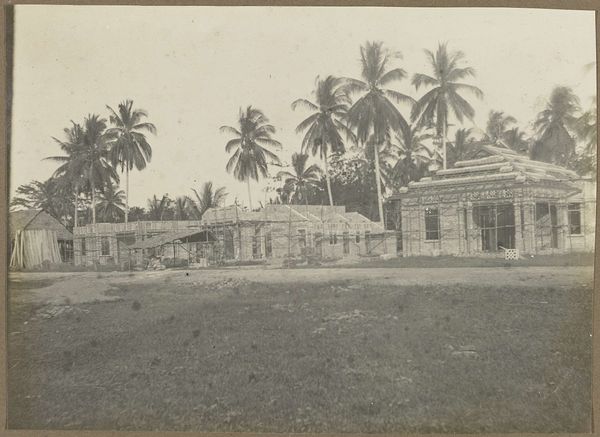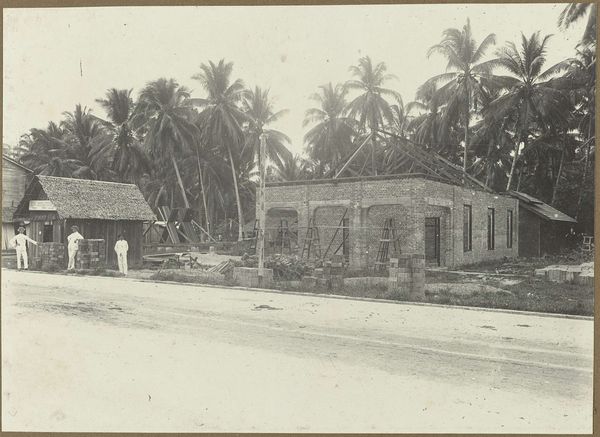
Laan met huizen van contractarbeiders in Tandjong Morawa op Sumatra before 1898
0:00
0:00
carljkleingrothe
Rijksmuseum
photography, albumen-print
#
landscape
#
photography
#
orientalism
#
albumen-print
#
realism
Dimensions: height 172 mm, width 284 mm
Copyright: Rijks Museum: Open Domain
Editor: So, this is "Laan met huizen van contractarbeiders in Tandjong Morawa op Sumatra," taken before 1898 by Carl J. Kleingrothe. It's an albumen print. It looks peaceful, but also a little stark. What do you see in this piece, especially knowing that it depicts housing for indentured laborers? Curator: Well, let’s start with the materiality of this albumen print. The process itself, using egg whites to bind the silver salts to the paper, speaks to a specific historical moment and the labor involved in creating images. Look at the neat rows of nearly identical houses. They suggest a system designed for control and efficiency, almost factory-like but for human lives. The albumen print flattens the workers into components of this plantation landscape, much like raw materials used to yield profit. Editor: That's a stark interpretation. It's hard to separate the serene aesthetic from the history of exploitation. Curator: Precisely. The photographer is using techniques of landscape photography to legitimize colonial views, almost advertising a controlled environment and a landscape optimized for productivity. The image acts as a commodity, divorced from the complex human experiences within that context. It’s orientalism manifest, turning labor into an aestheticized product to be consumed. Editor: I see what you mean. The aesthetic feels like a facade hiding a more sinister reality rooted in economic and material exploitation. I never thought about photography itself as a form of production. Curator: Exactly! Examining the means of production – the photographic process, the layout of the dwellings, the cultivation of the land – unveils the systems of power at play. The houses were likely constructed with locally sourced materials through forced labor; everything about this scene screams resource extraction. It transforms a peaceful landscape into something deeply unsettling when you understand its origins and purpose. Editor: I’ll definitely consider the production processes more closely from now on! Thanks! Curator: A keen awareness of historical context enhances the analytical viewing of artwork!
Comments
No comments
Be the first to comment and join the conversation on the ultimate creative platform.
